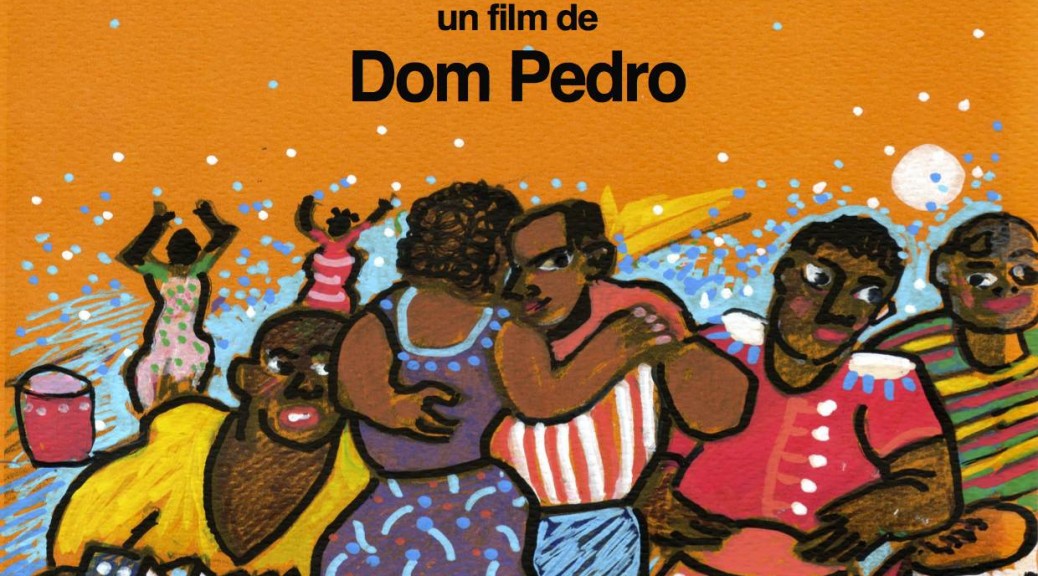From July 16 to 18, Modern Moves team members (Ananya, Madison and Elina) went to Lisbon for a special encounter with Afro-lusophone music and dance cultures.
Unfortunately, Francesca was not there as she was giving dance classes in France (yes, MM team members are often playing musical chairs!), but we met Livia Jiménez, Spanish anthropologist now working at the University of Lisbon as a postdoctoral fellow with a project analysing interethnic relations and ethnic constructions in contexts of social dance (through kizomba and bachata). It is an understatement to say that we had some topics to discuss!
She led us to lunch in a secret place, on the 8th floor of a building near Marques de Pombal. We were excited to discover there the Associação Caboverdeana restaurant where we could enjoy “almoços dançantes” (live music from Cape Verde and people dancing in the middle of lunch) only on Tuesdays and Thursdays.
(Video Courtesy of Livia Jimenez)
The taste of the typical Cape Verdian meal cachupa watered with a nice vinho verde, the beautiful voice of Zézé Barbosa singing moving morna songs and energetic funana and coladera pieces on hearing which we could not stay seated, the amazing view of Lisbon from the large windows and the joyful atmosphere in this unexpected dancing place transformed this moment into a special day for Modern Moves.


As Ananya explained us that it was in these kinds of places that kizomba was born, among people sharing a certain nostalgia for Afro-luso culture, we were able to feel more deeply the historical power of such hidden venues. Even more, when we learned that this place is not only attended by people from Cape Verde but also by all sorts of Lisbon-dwellers, e. g some mature gentlemen who served the Portuguese empire, including some who had even fought in Angola on the eve of its independence, we could feel how music and dance can be a site for people to reconnect themselves with a part of their personal life histories, and for those histories to become part of a larger story.
Before this unforgettable lunch, our immersion in the Cape Verdian heritage in Lisbon had already started with Kwenda Lima’s show Muloma on the evening of our arrival and oops, we did it again on the second night of our stay.
When we entered the venue, the Malaposta Cultural Centre, all our senses were attracted to the distinctive smell of incense pervading the space, the sound of the rhythms played by a jembé player on a corner of the stage in front of the heavy velvet curtain, the red and white flowers and candles in the foreground of the stage, aesthetically arranged.

All these items were creating a very special atmosphere even before the beginning of the piece. Indeed, the entire show was going to unfold like a ritual, from the start to the end, from the two little girls dressed in white coming from the back to the stage holding a plate with lit candles to the ultimate scream of one of the dancers, a birth and a death.
The piece, which lasts one hour, is divided in three parts and performed by five female dancers and Kwenda. Apart from their physical movements, the evident work that went into the assemblage of the soundtrack has to be acknowledged as it definitely contributes to create a powerful and moving atmosphere, carrying different kinds of spirituality, from the Middle East to Africa. These different musical ambiances were unified by the dancers’ moves (undulations) and some ever-present sounds like the layers produced by synthesizer, cello or bass and the use of breath throughout.
The quite slow tempo of the music, the natural colours (brown, magenta…) and blurred shapes of the costumes, the lights like dawn and sunset, the feline moves, the whispers and the growls, all was there to suggest the (lack of?) border between human and animal, the primitiveness of sexual instincts and the primal need for spirituality.
The mix between latent eroticism, spirituality and nature of the first part reminded me of the famous Nijinski’s piece L’après-midi d’un faune, with regards to the work on the virility of the male body and to several scenes, when copulation was suggested or when Kwenda was promenading in the middle of the female dancers (the nymphs?) who were on their knees in an attitude of prayer in a sort of pagan ritual. In a striking tableau, Kwenda dances in the foreground with a calabash while another dancer moves slowly across the backdrop. Both almost nude, they suggest —among other things— the emptiness of materialism and the difficulty of dialogue.
The hinge between the two dancing parts is a video screening, which first celebrates nature and mother earth — an ongoing concern of Kwenda’s, but suddenly switches to images of manmade disasters.
In the third part, the video element continues, but screens fragment, mysterious images multiply and the predominant colours change to red and white. reminding us of the orisha Chango. All the candles are now lit, and calabashes and straw brooms are incorporated by the dancers. A single dancer swirled fabric around herself, whirling dervish-like; in the final scene, this use of fabric by all the dancers reminded me in a way of Loïe Fuller’s Serpentine Dance.
This piece is symbolically complex and uses many items from different sources to critique capitalism, consumerism, and ecological neglect. It provoked numerous questions in us, besides also simply moving us. Kwenda Lima, born in Cape Verde, performing in Lisbon for an international audience, offered a syncretized Afro-contemporary dance piece that has its place on a globalized stage. And as Ananya said to him after the show when he asked if we were surprised to see another part of his choreographic work, we were especially very happy to discover a “continuation” and the embodiment of his philosophy, which we had already discovered through his kaizen classes.

Even though Muloma was the main goal of this trip to Lisbon, we not only enjoyed the Cape Verdian ‘dancing-lunch’, but also visited Jazzy Studio and the B. Leza club —in a word the main places in which Afro-lusophone music and dance culture in Lisbon is performed.

And even if the locals may not be particularly interested in what we were looking for, you could not walk in Baixa Chiado without encountering some Capoeira dancers (from Sweden!) in the street or listening to a Cape Verdian orchestra in front of Café a Brasileira. Yes, in Lisbon you can’t avoid the African connection, and it is for the best!



ELINA DJEBBARI




